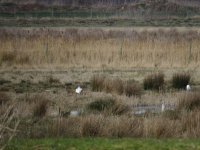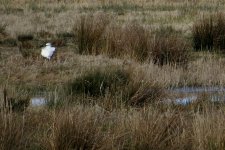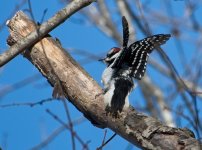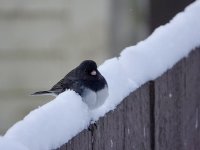Hello.
With a significant occasion coming up in my life, I decided that I would allow myself to explore one of three options to enhance my enjoyment via birding tech. I expect many of you have faced similar decision points and I would be happy to read how your made your decision - no doubt you've come up with some insights I have not considered.
Option 1 - Swarovski CL curio 7x21 pocket binos to walk around with, to/from work, and around campus during breaks
Option 2 - High-mag stabilized binoculars for longer-range, on the fly viewing, to compliment my EL8x32 on dedicated birding outings
Option 3 - "super zoom" camera for double duty - higher mag option than my binos and image capture, on dedicated birding outings
Why?
Option 1 - pocket swaros - I use some cheap nikon pockets and some old beat up leica trinovids for walking around but I find them to be a little uncomfortable and clearly inferior to the 30 and 32mm swaros I use on dedicated outings. I would like to not feel like I'm using junkers when I do have the occasionally opportunity to see something unexpected on a work day.
Option 2 and 3 - high mag compliments - I have a scope but I almost never use it because it don't usually go to a single location to see birds, much preferring walks/hikes with frequent pauses. However, I miss the option of higher magnification, so I know that at some point I will want a more mobile alternative to a scope. I like the notion of watching birds with binocular vision with the stabilized binos (e.g., fujinon 14x40), but I can't help but think it would be a missed opportunity to get a higher-mag camera for a similar price ($1000-1500usd) and then I get the proof(!) that I saw what I saw and can sort of prolong the joy after the outing.
Thanks for your time and input.
With a significant occasion coming up in my life, I decided that I would allow myself to explore one of three options to enhance my enjoyment via birding tech. I expect many of you have faced similar decision points and I would be happy to read how your made your decision - no doubt you've come up with some insights I have not considered.
Option 1 - Swarovski CL curio 7x21 pocket binos to walk around with, to/from work, and around campus during breaks
Option 2 - High-mag stabilized binoculars for longer-range, on the fly viewing, to compliment my EL8x32 on dedicated birding outings
Option 3 - "super zoom" camera for double duty - higher mag option than my binos and image capture, on dedicated birding outings
Why?
Option 1 - pocket swaros - I use some cheap nikon pockets and some old beat up leica trinovids for walking around but I find them to be a little uncomfortable and clearly inferior to the 30 and 32mm swaros I use on dedicated outings. I would like to not feel like I'm using junkers when I do have the occasionally opportunity to see something unexpected on a work day.
Option 2 and 3 - high mag compliments - I have a scope but I almost never use it because it don't usually go to a single location to see birds, much preferring walks/hikes with frequent pauses. However, I miss the option of higher magnification, so I know that at some point I will want a more mobile alternative to a scope. I like the notion of watching birds with binocular vision with the stabilized binos (e.g., fujinon 14x40), but I can't help but think it would be a missed opportunity to get a higher-mag camera for a similar price ($1000-1500usd) and then I get the proof(!) that I saw what I saw and can sort of prolong the joy after the outing.
Thanks for your time and input.
Last edited:












